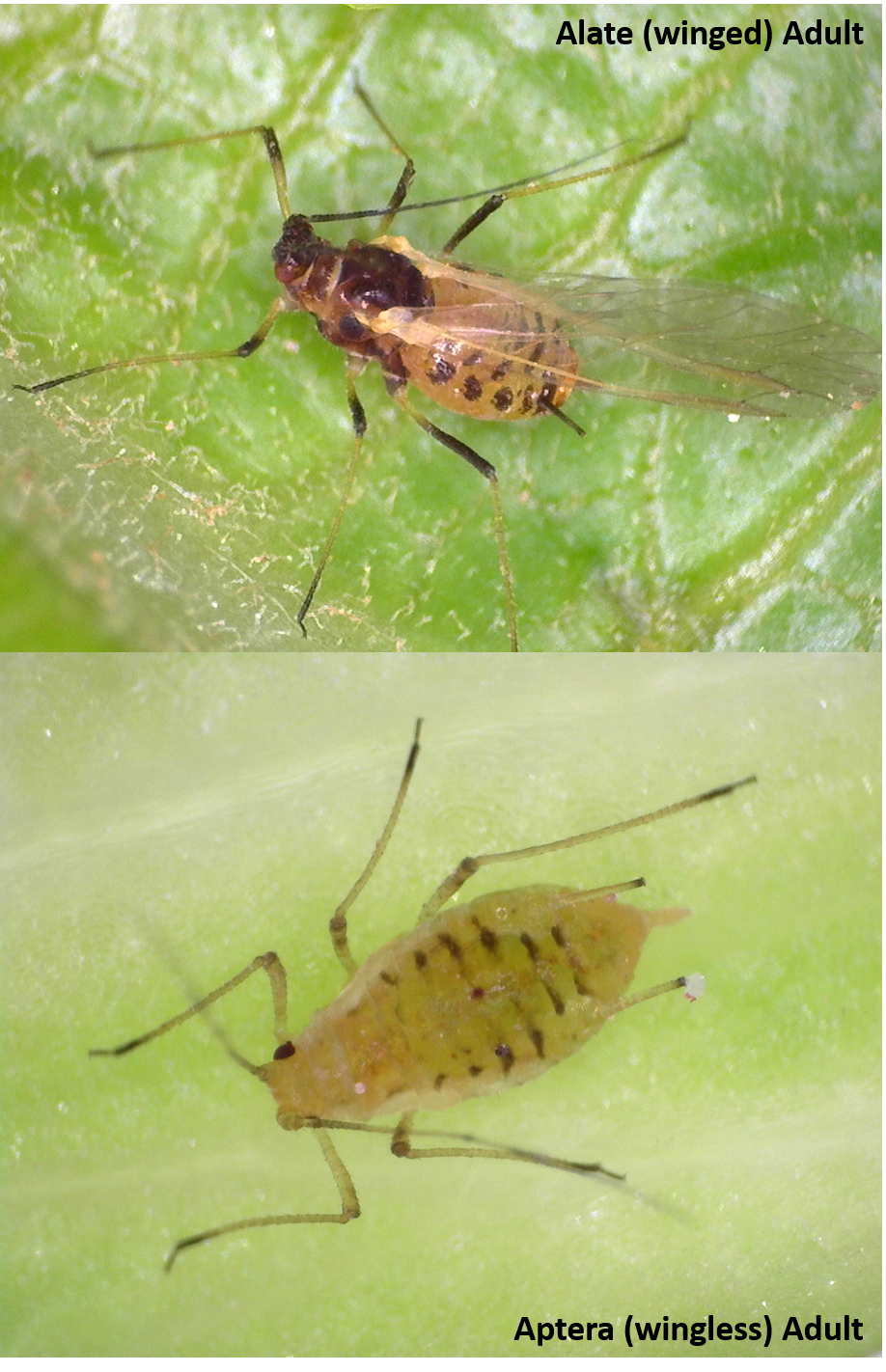
|
|
|
|

|
|||
|
|
|||
With the spring melon deal in Yuma finishing up in the next couple of weeks, now is the time to begin thinking about whitefly management in fall produce and melons crops. The first line of defense in avoiding whitefly issues in the fall produce/melon plantings is for PCAs and growers to do a good job of controlling whiteflies on cotton this summer. But before whitefly management begins in cotton, it is important that whitefly populations be prevented from building up to large numbers in the spring melons that have recently finished, or are nearing completion of harvest in the next few weeks. Although whitefly numbers have been relatively lighter this spring than normal, adult numbers have increased significantly over the past week in melons coinciding with higher temperatures and area-wide melon harvests. Growers and PCAs should not hesitate to knock these populations down on pre-harvest melons. Under current weather conditions (high temperatures) immature populations can rapidly build-up and cause honeydew/sooty mold contamination on fruit. Once harvest is complete, proper sanitation in spring melons is critical for preventing unnecessary whitefly migration into cotton and alfalfa. It is highly recommended that melon growers quickly destroy plant residue as soon as possible following harvest. A delay in disking under melon fields following harvest can provide a large source of adult whiteflies that will readily disperse into cotton and alfalfa, especially if they don't need to fly very far. These fields also potentially extend the host-acquisition period for CYSDV. Once melons fields have been disked and flat-watered, it is common for volunteer melons to germinate and emerge during July. The destruction of volunteer melons between spring and fall crops can reduce the source of whiteflies and virus inoculum available. This can be done by disking or applying a contact, burn-down herbicide to fields. Volunteer plants should be destroyed as soon as practical. Recent research has indicated that fall melons grown near spring melons with volunteers (<1.8 miles) are at a high risk of CYSDV infection. Ideally, it is in the Ag community’s best interest to use sound cultural management practices, such as sanitation, to eliminate and avoid unnecessary sources of whiteflies before the fall produce and melon seasons begin. For more information on cultural management practices for whiteflies see: Insect Management on Desert Melons: Whiteflies. |
|||
| Back | |||
|
For questions or comments on any of the topics please contact Marco Pena at the Yuma Agricultural Center.
|
|||
|
Home |
Cotton | Veggies |
Forages | Grains
| Citrus |
Crop x Crop Insects | Diseases| Weeds | Pesticides | Economics | News | Weather | Research | Photos | Contacts | General Info. Copyright © 2001 University of Arizona, College of Agriculture and Life Sciences Webmaster: Al Fournier (acis@ag.arizona.edu) |
|||

